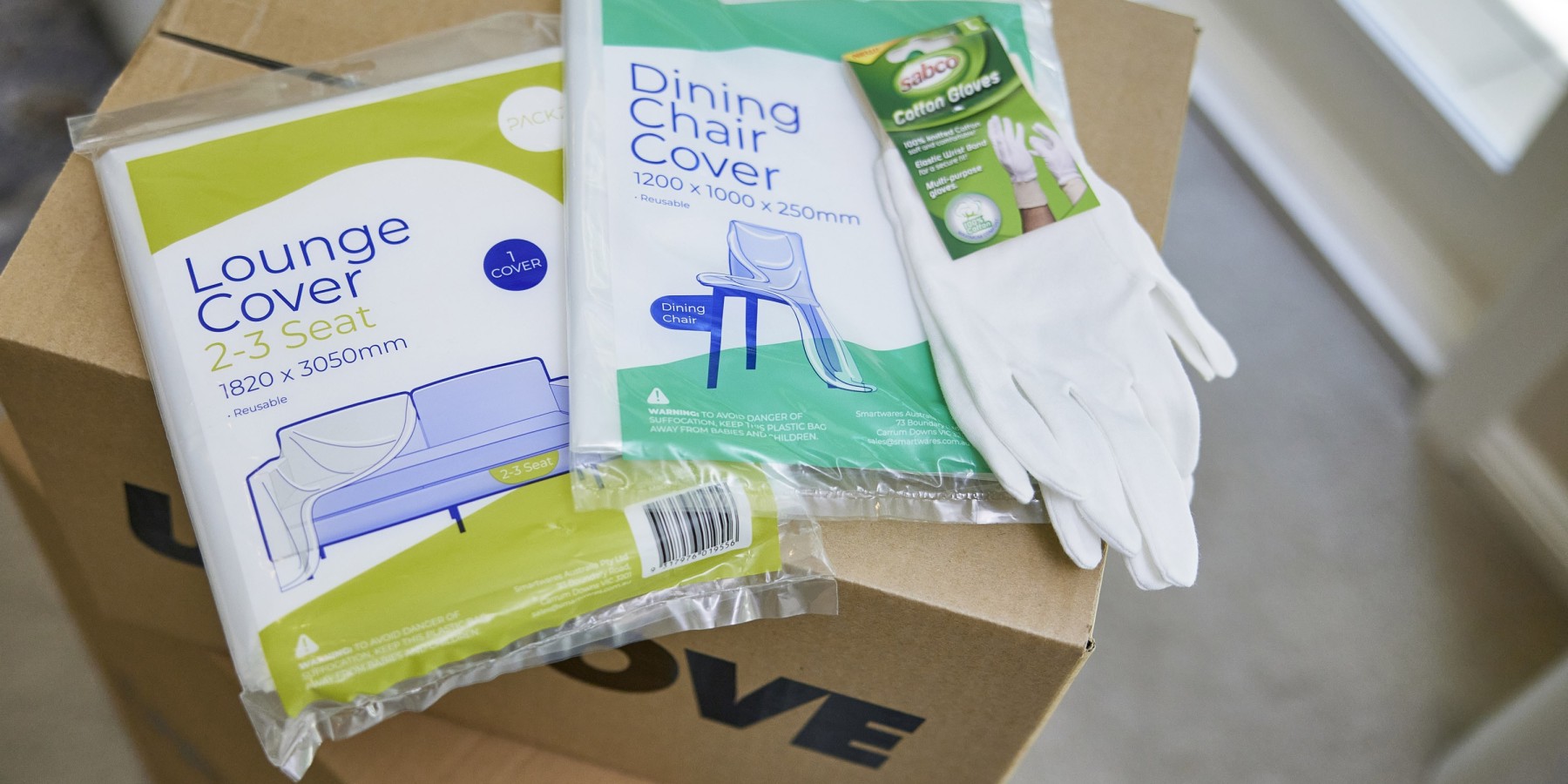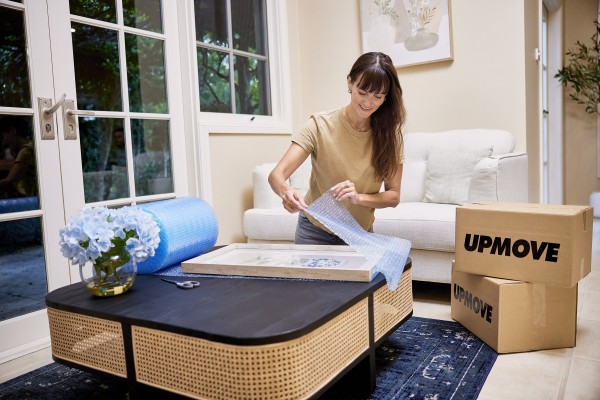What’s the best way to move a couch?

Imagine sinking into a brand-new couch, the kind that hugs you just right after a long day. Maybe it’s a plush, cloud-like beauty you’ve been eyeing for months, or perhaps it’s a sleek, modern piece that’ll finally bring your living room together.
On the flip side, you’ve got an old faithful—the couch that’s seen countless movie nights and the occasional snack spill—but it’s time for it to go. It doesn’t matter whether you’re upgrading to something dreamy or finally tackling the move of that bulky beast to another room, there’s something satisfying about making it happen.
But let’s be real—couches can be tricky. They’re big, awkward, and seem to have a mind of their own when it comes to tight doorways or stairs. But don’t stress—there’s a smarter way to handle it.
With a bit of planning, the right tools, and some solid advice, you can make the whole process a lot less painful. This guide’s got everything you need, from lifting tips to clever solo hacks, so by the end, you’ll be well on your way to moving that couch like a pro.
Planning the couch move
Before you move your couch, it’s worth taking a moment to plan ahead. Thinking about safety and mapping out your route can save you a lot of time, hassle, and headaches.
1. Safety tips

A little caution goes a long way when moving a heavy couch. Keeping safety in mind can help you avoid injuries and make the whole process much smoother.
-
Consider footwear: First off, wear sturdy, closed-toe shoes—you don’t want to drop the couch on your foot wearing thongs.
-
Gloves: If the couch is big or heavy, consider wearing gloves with good grip. They’ll stop it from slipping out of your hands and make the whole process a bit more comfortable.
-
Your working area: Clear the area before you start—kids, pets, or stray shoes lying around can quickly turn a simple move into an accident waiting to happen.
-
Know your limits: Grab a helper or two if you’re in doubt on whether you can handle the weight—it’s not worth the risk. Overestimating your strength can mean an injury or damage to the couch. If you don’t have a helper on hand or need extra muscle, Upmove can help you find and hire experienced removalists to take the weight off your shoulders and make sure your couch is moved safely.
-
Plan the route: Take a good look at the route before starting the move. Identify tight corners, narrow spaces, or any potential obstacles. Clearing the way beforehand can save you a lot of trouble halfway through the move.
2. Tools to make the job easier

Even the toughest among us can use a hand when it comes to moving a big couch. This is where the right gear can make a world of difference. Also, if you find you’ve got to move it without a buddy, these tools are worth their weight in gold.
-
Furniture sliders: These little wonders let you slide the couch across floors without leaving scratches or breaking a sweat. They’re really handy for both carpet and timber floors. Great for moving furniture when solo.
-
Moving blankets: These are brilliant for keeping your couch free from scuffs and protecting walls or floors. Wrap the couch up before you start, and you’ll be glad you did when it comes out the other side unscathed.
-
Dolly or hand truck: For the really hefty couches, a dolly or hand truck is a lifesaver. It takes the weight off your arms and lets you wheel the couch to its new spot without all the heavy lifting. And, it's one of the safest ways to handle heavy couches on your own.
-
Straps and padding: If you’re loading the couch into a ute or van, ratchet straps are your bestie. They’ll keep everything secure during transit, while corner protectors or plastic wrap save both the couch and walls from nasty dings. Also, if sliders aren’t an option, ropes or straps can help you drag the couch across smoother surfaces when you’re on your own.
How to move the couch
Now you’ve got all your gear to move the couch safely, it’s time to think about using the right techniques and tools—not about brute strength. With the right approach, you can avoid damage to your home, your couch, or yourself.
1. Lifting and moving

It’s tempting to just grab hold and get stuck in, but rushing is a rookie mistake. That’s how you end up with a dodgy back, a dent in the wall, or a couch leg that’s seen better days. The trick is to lift properly and work as a team. This is how you do it.
-
Lift with your legs, not your back: Bend your knees, engage your core, and let your legs do the grunt work. You’ve probably heard this a hundred times, but it’s easy to forget when you’re in the thick of it. Your back will thank you later.
-
Communicate with your team: If you’ve got someone to help, have a quick chat about the plan—who’s lifting what, how you’re moving, and where you’re going. Staying in sync keeps things smooth and avoids any awkward accidents.
-
Use tools for stability: We’ve said it once and we’ll say it again—sliders, blankets, dollies and/or straps can be a game-changer for keeping things steady.
-
No tools: Without access to tools, you might just be able to walk your couch forward. To do this, lean the couch so only one side’s resting on the floor, either vertically or horizontally. Now carefully “walk” it forward step by step. It’s not glamorous, but it works.
-
Take your time: Whatever you do, don’t rush. Slow and steady is the name of the game here.
2. Getting through tight spots
Navigating doorways and narrow spaces can turn into a real challenge if you’re not prepared. By measuring and using smart techniques, you can get your couch through even the trickiest spaces.
-
Measure and plan ahead: There’s something about doorways and couches that turns every move into a puzzle. To avoid frustration, measure first. Knowing the dimensions of both the couch and the doorway gives you a fighting chance.
-
Disassemble if necessary: If you’re struggling, take off any removable parts like legs or cushions. Anything that reduces the bulk will make life easier.
-
Tilt and pivot for tight spaces: Tilting the couch slightly or angling it can often get it through spaces that seem impossible. The good old “pivot and slide” move works wonders for L-shaped couches—one person steers the top, the other the bottom, and you slowly twist it through.
-
Remove the door if needed: If all else fails, don’t be shy about popping the door off its hinges. It’s a bit of effort but can save you a lot of grief in the long run.
3. Moving up or down stairs
Moving a couch on stairs takes extra care and planning. With the right strategy and teamwork, you can make it work without unnecessary strain or accidents. Here are our favourite tips.
-
Tilt into an “L” shape: Stairs are where things get tricky, but tilting the couch into an “L” shape makes it easier to manoeuvre around corners.
-
Strongest person at the bottom: If you’re heading downstairs, have the strongest person at the bottom to handle most of the weight. For upstairs moves, the person at the top should guide and balance the couch while the bottom person pushes.
-
Dolly for stability: A dolly can make the job easier, but only if you’ve got enough room to secure the couch and keep it stable. And this tip really takes a bit of skill to master. Only attempt it if you’re absolutely confident.
-
Communicate constantly: Always call out steps or adjustments to avoid accidents. Taking it one step at a time is the safest way to go.
Transportation tips
 Once you’ve got the couch out of the house or the shop, getting it into your car, ute, or van is the next step.
Once you’ve got the couch out of the house or the shop, getting it into your car, ute, or van is the next step.
-
Choosing the right vehicle: For starters, make sure you’ve got a vehicle big enough. A ute or van is ideal, but if you’re working with a car, measure the space to see if the couch will fit—even then, it’s usually a tight squeeze. If you’re worried about finding the right vehicle, Upmove’s network of local movers has options to suit every job, from compact vans to full-sized utes.
-
Positioning the couch: When loading, position the heaviest part against the back of the vehicle. This keeps the weight balanced and prevents it from tipping during the drive.
-
Securing the couch: Use ratchet straps or bungee cords to secure it properly. Watching your couch slide around every time you hit the brakes is no fun. Don’t forget to wrap it in moving blankets or plastic to keep it clean and scuff-free while in transit.
Final touches for a smooth move
Once the couch is in its new spot, a few finishing steps can make the process seamless. Clearing the route and knowing when to call in professionals will make your move stress-free.
-
Clear the route: Before you jump in, take a good look at the route you’re planning to take. Are there any tight corners, low ceilings, or random clutter in the way? Clear the path so you’re not tripping over shoes or bumping into stuff halfway through.
-
Call in the pros if needed: For really massive or valuable couches, it might be worth calling in professional removalists. They’ve got the gear and expertise to handle tricky moves. Using a platform like Upmove will make the process much easier—you can review removalists, get quotes and book movers all on the same platform.
Wrapping it up
Moving a couch might never be the highlight of your day, but with the right prep and a few clever tricks, it doesn’t have to be a nightmare either. Whether it’s navigating narrow hallways, conquering a staircase, or wrestling it into a van, it’s all about working smarter, not harder. Tools like sliders, dollies, and moving blankets can make a world of difference, but sometimes, even the best DIY efforts can fall short. That’s when calling in the pros comes in handy.
Platforms like Upmove connect you with an experienced moving company who’ve seen it all—tight spots, steep stairs, you name it. Instead of risking an injured back or a scuffed-up couch, you can hand over the hard stuff and focus on where your couch belongs. After all, it’s not just furniture—it’s the spot for movie marathons, lazy Sunday naps, and good chats.
What do our customers say?































